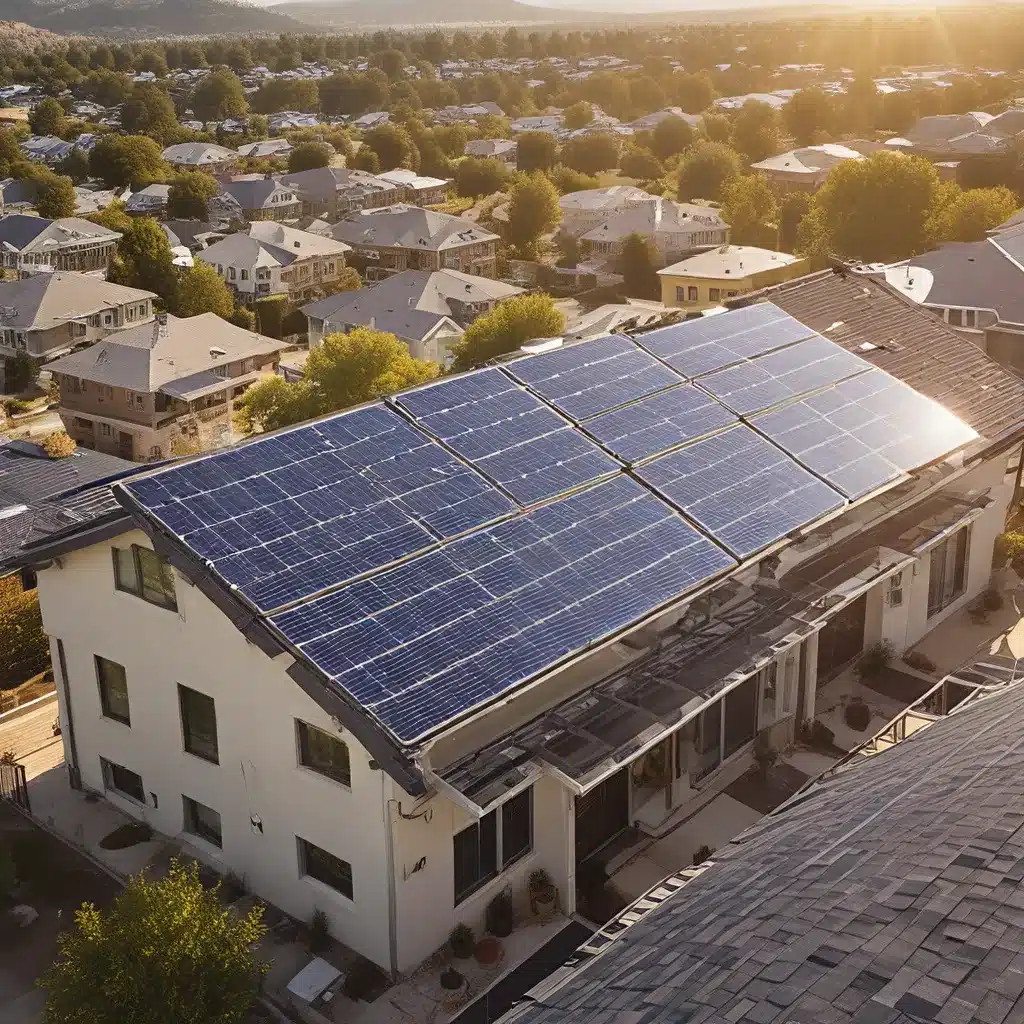
Ah, the sun – that glorious orb in the sky that has captivated humanity for millennia. But did you know that you can harness its power and use it to power your home? That’s right, my friends, the future of energy is solar. And as a homeowner, you have the opportunity to join the renewable energy revolution.
The Basics of Solar Power
Let’s start with the fundamentals. There are two primary technologies that can convert the sun’s energy into electricity: photovoltaics (PV) and concentrating solar power (CSP). PV is the one you’re probably most familiar with – those sleek, shiny panels you see on rooftops and in solar farms. When sunlight hits the panels, the photons in the light are absorbed by the cells, creating an electric field that allows electricity to flow.
On the other hand, CSP is a bit more complex. It uses mirrors to reflect and concentrate sunlight onto a receiver, which then collects the solar energy and converts it to heat. This heat can then be used to generate electricity. While CSP is an impressive technology, it’s typically used in large-scale power plants and isn’t really suited for residential applications.
So, if you’re a homeowner looking to go solar, PV is the way to go. But before you start dreaming of a fully off-grid lifestyle, there are a few things you’ll need to consider.
Sizing Up Your Roof
Not all roofs are created equal when it comes to solar panel installation. The size, shape, and orientation of your roof can have a big impact on the performance and efficiency of your solar system. Ideally, you want a south-facing roof with a 15 to 40-degree slope. This allows the panels to capture the maximum amount of sunlight throughout the day.
But what if your roof isn’t quite up to par? Don’t worry, there are still options! Community solar projects allow you to participate in a shared solar array, even if your own roof isn’t suitable. And if you’re a renter or don’t own your home, community solar might be your best bet.
Another factor to consider is the age and condition of your roof. If it’s getting up there in years and will need to be replaced soon, you might want to hold off on the solar installation until you’ve taken care of that. After all, you don’t want to have to remove and reinstall your panels every few years.
Crunching the Numbers
Alright, now for the part that really makes your head spin: the cost of going solar. The good news is that the prices of solar panels and installation have been dropping steadily over the years, making it more accessible than ever. In fact, solar is already cost-competitive with traditional electricity in some areas.
But the exact cost for you will depend on a few factors, like the size of your system, your location, and the financing option you choose. Generally, a purchased system will have the lowest total cost, but you’ll need to come up with the upfront investment. Solar loans can help lower those initial costs, with monthly payments often lower than your energy bill.
And let’s not forget about those sweet, sweet tax credits and incentives. The federal Solar Investment Tax Credit (ITC) can shave a nice chunk off your installation costs, and many states and local governments offer their own incentives as well. Be sure to do your research and take advantage of every opportunity to save.
Navigating the Installation Process
Once you’ve done your homework and decided to take the plunge, it’s time to find a qualified solar installer to bring your renewable energy dreams to life. Look for a company with a NABCEP certification, which is the industry standard for solar installations.
They’ll work with you to design a customized system, handle all the permits and paperwork, and ensure your installation meets all local building, fire, and electrical codes. And don’t forget to ask about energy storage options like batteries – they can help you maximize the benefits of your solar panels.
One more thing to consider: if you live in a neighborhood with a homeowners association (HOA), you’ll likely need to submit a request before you can install solar panels. Luckily, most states have solar access laws in place to prevent HOAs from unreasonably restricting these types of installations.
The Benefits of Going Solar
Now, let’s talk about the perks of joining the solar revolution. For starters, there’s the environmental impact. By harnessing the power of the sun, you’re reducing your carbon footprint and doing your part to combat climate change. It’s like getting a green halo above your head (or at least that’s how I like to think of it).
But the benefits don’t stop there. Studies have shown that homes with solar panels sell faster and for higher prices than their energy-guzzling counterparts. So not only are you saving money on your electricity bills, but you’re also increasing the value of your home.
And speaking of savings, the amount you can expect to save on your energy costs will depend on the size of your system, your electricity rates, and how much sun your roof gets. But according to the National Renewable Energy Laboratory, a 7.15-kilowatt system is typically enough to power the average home in, say, Austin, Texas.
Embracing the Solar Future
As you can see, the world of solar power is vast and complex, with a lot of moving parts to consider. But don’t let that overwhelm you. With a little research, some savvy financing, and the help of a trusted installer, you can harness the power of the sun and join the growing ranks of homeowners who are leading the charge towards a renewable energy future.
So, what are you waiting for? Grab your sunglasses and get ready to bask in the glory of your very own solar energy system. The future is bright, my friends, and it’s just waiting for you to take the leap.

